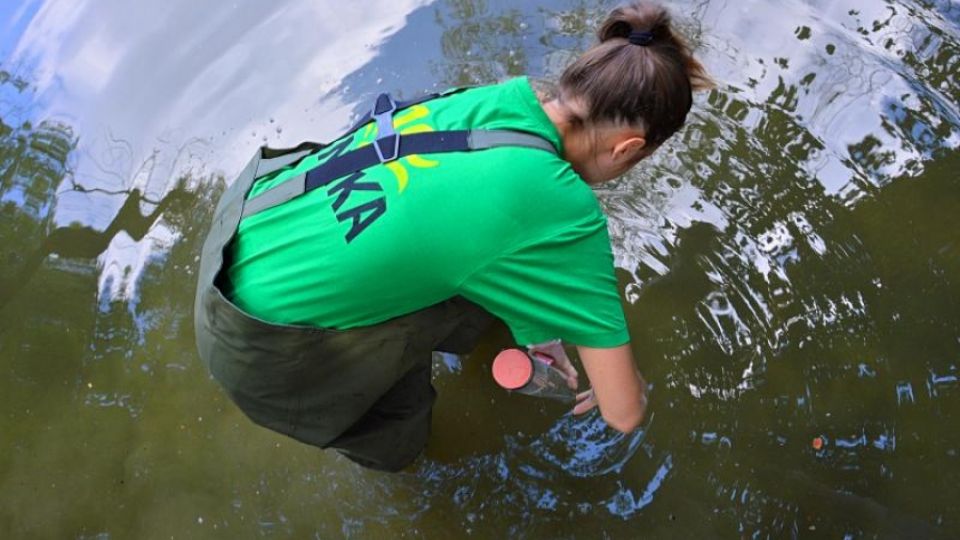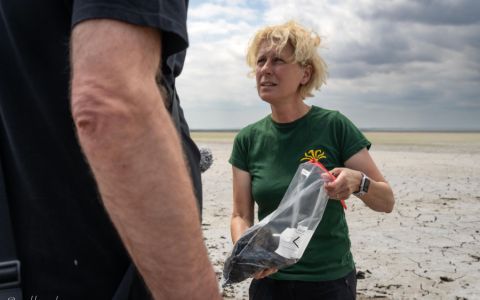Water, sediment, and fish samples from streams in Prague were analysed for contamination with perfluorinated substances (PFAS, e.g. PFOA and PFOS) and brominated flame retardants (BFRs). Chemicals damaging the hormonal and nervous systems have been found in all locations in similar concentrations to those that were detected previously in other European rivers. The highest levels of PFAS were revealed in the vicinity of the Prague airport. The contamination is most probably caused by the long-term and extensive use of fire-fighting foams containing perfluorinated chemicals. These substances persist in the environment; they bioaccumulate and contaminate drinking water supplies.
“Perfluorinated substances and brominated flame retardants are not essential for the majority of applications and there are already safer alternatives on the market today. Therefore, their production should stop immediately. We call on both manufacturers and legislators to restrict the use of these toxic substances for all non-essential purposes. The deterioration in the quality of drinking water and the global environmental contamination caused by PFAS are irreversible,” says Jitka Strakova from Arnika.
FOREVER CHEMICALS ROUND AND ROUND: Contamination of water bodies with perfluorinated substances and brominated flame retardants in the Prague area for free download HERE >>>
The first step is the introduction of continuous monitoring of PFAS and the reporting of their emissions via the Czech Pollutant Release and Transfer Register (PRTR). The Czech Environment Minister, Richard Brabec, promised to include PFAS substances into the Czech PRTR on the basis of Arnika's petition for Poison-Free Rivers. More than 6,550 people have already signed the petition.
The use of these toxic chemicals is gradually being banned at the European and international levels. However, the chemical industry replaces them with substances with similar properties and the legislative ban lags behind in practice. The European Commission therefore proposed in its chemical strategy to restrict the entire PFAS group, especially in textiles, food packaging, and cosmetics and wherever their use is not essential, e.g. in healthcare.
PFAS contamination significantly higher at the airport and in the historical industrial area
The highest measured concentrations were found in a water sample from the Kopaninský stream. The source of contamination is most probably the long-term use of fire-fighting foams containing PFAS at the nearby Václav Havel Airport. The value of 164.34 ng/l is similar to the concentration found in large industrial agglomerations. Comparably higher PFAS and PFSAs concentrations of 17.4 μg/kg of wet weight in European perch were found in fish from the Rokytka stream in Libeň. It might reflect the historical burden of the Vysočany industrial area, where contamination with legacy chemicals, as well as new contaminants, can be expected. The contamination of other water and fish samples is comparable to the pollution of other Czech and also large European rivers.
PFAS substances stay in the human body for long periods of time. They can cause reproductive and developmental as well as immunological disorders, and some studies suggest they can cause tumours in laboratory animals.
Their most common use is in stain- and water-resistant textiles and in grease-resistant food packaging materials and kitchen utensils. The general public is familiar with Teflon for the production of non-stick kitchen utensils or Gore-Tex, used as a waterproof layer in outdoor clothing and footwear. They are also used in ski waxes, floor cleaners, and cosmetics. The main source of PFAS pollution comes from the use of fire-fighting foams. A significant source of pollution is industrial facilities where PFAS were produced or used to manufacture other products and the use and disposal of consumer products containing PFAS. The major route of exposure occurs via wastewater. As these substances persist and bioaccumulate in the food chain, people are exposed to them via food and drinking water.
Brominated flame retardants (BFRs) in the Prague waters
BFRs were detected in all the sediment and fish samples; however, their levels follow commonly occurring values. They were generally lower than those found in similar scientific studies, as well as studies organized by Arnika. The highest concentrations found in our study were in fish caught at the Rokytka confluence in Libeň and the pollution comes from the Vysočany industrial area, reflecting the historical burden with legacy chemicals. Interestingly, the fish samples showed contamination with new brominated flame retardants introduced as substitutes for substances that are already banned. Unfortunately, they also bioaccumulate in fish and may cause similar toxic effects to be exhibited.
Brominated flame retardants damage the immune, endocrine, and reproductive systems, cause ADHD in young children, and have negative effects on the healthy development of the foetus. They have an inhibitory effect on combustion and thus reduce the flammability of products containing them. They are commonly used in plastics, textiles, and electrical/electronic equipment. The recycling of the plastic casings of waste electronic equipment has contaminated a range of consumer products, including children’s toys. They pollute Prague waters in a similar way to PFAS.
Arnika collected seven samples of river water, three sediment samples, and four fish samples from the water bodies and had them analysed for PFAS and BFRs content in the laboratory of the Department of Food Analysis and Nutrition of the Prague University of Chemistry and Technology.







